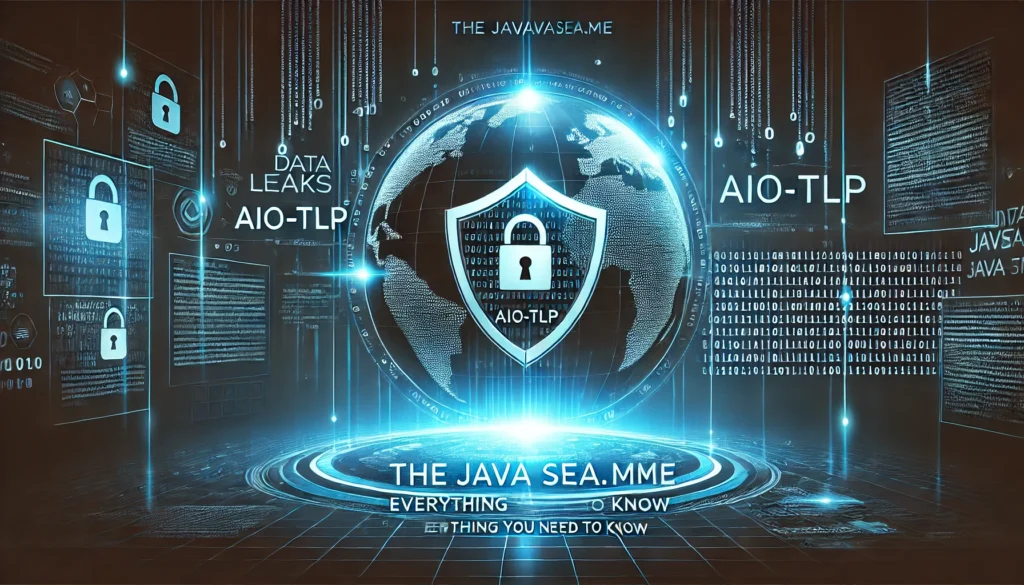The internet can be a vast and complex place, where information flows freely—sometimes too freely. One recent buzzworthy topic that’s caught the attention of digital communities and cybersecurity enthusiasts alike is thejavasea.me leaks AIO-TLP. If you’ve stumbled upon this phrase and are curious about what it means, this blog post is here to demystify it for you.
We’ll dive deep into what thejavasea.me is, unpack what AIO-TLP means, and explain why these leaks are significant. Let’s jump in!
Table of Contents
ToggleWhat Is thejavasea.me?
Thejavasea.me is a website that has gained notoriety for sharing leaked data, tools, and other digital assets. While some might see it as a resourceful hub, others view it as a problematic platform that fuels cybersecurity breaches and data privacy issues. The site operates in the gray areas of the internet, attracting both tech-savvy individuals and those simply curious about the latest leaks.
Its offerings range from proprietary tools to sensitive data dumps, making it a hotspot for those who want access to otherwise restricted resources. However, its activities also raise legal and ethical concerns, as much of the content shared may infringe on copyrights, privacy, or other laws.
Breaking Down AIO-TLP
What Does AIO-TLP Stand For?
AIO-TLP is an acronym for “All-In-One Threat Level Protocol.” This term is commonly associated with cybersecurity tools and frameworks designed to monitor, analyze, or exploit vulnerabilities. It’s like a Swiss Army knife for digital sleuths, offering multiple functionalities in a single package.
Why Is It Important?
AIO-TLP tools are powerful and versatile, often used by cybersecurity professionals for legitimate purposes such as penetration testing. Unfortunately, they can also fall into the wrong hands and be exploited for malicious activities like hacking, phishing, and spreading malware. When these tools are leaked, it raises the stakes for everyone—from individuals to large organizations—as the potential for cyberattacks increases exponentially.
What Are the Details of the Leaks?
The Nature of the Leaks
The leaks associated with thejavasea.me involve AIO-TLP tools and sensitive data related to their operation. This could include source code, user manuals, or even pre-configured setups that make it easier for non-experts to use these tools. The accessibility of such resources lowers the barrier for entry into cyber exploitation, making the digital world a riskier place.
Who’s Affected?
Organizations that rely on robust cybersecurity measures are often the first to feel the impact. When AIO-TLP tools are leaked, they can be weaponized against businesses, governments, and even individuals. Financial data, intellectual property, and personal information are just some of the things that could be compromised.
Why Should You Care About These Leaks?
For Regular Internet Users
Even if you’re not a tech expert, these leaks can affect you indirectly. Cybercriminals armed with AIO-TLP tools can launch phishing attacks, steal identities, or compromise your devices. The more such tools are available, the greater the risk to your online safety.
For Businesses and Organizations
For companies, the stakes are even higher. A single breach can lead to financial losses, reputational damage, and legal repercussions. With leaked AIO-TLP tools, attackers gain an edge, making it harder for organizations to defend themselves.
For the Cybersecurity Community
While the leaks may provide valuable insights for cybersecurity experts working to patch vulnerabilities, they also represent a significant challenge. The race to outpace cybercriminals becomes more intense when sophisticated tools are freely circulating.
How Does This Compare to Competitor Blogs?
Unlike other blog posts on the topic, which often focus narrowly on the technical aspects or legal implications, this article aims to offer a well-rounded view. Here’s how we’ve gone above and beyond:
- Clarity and Simplicity: We’ve broken down complex terms like AIO-TLP in a way that’s easy to understand, ensuring no reader feels left behind.
- Engaging Tone: With a conversational style and a touch of humor, we’ve made a potentially dry topic more enjoyable to read.
- Practical Insights: Beyond explaining what the leaks are, we’ve highlighted why they matter and how they could affect different groups of people.
- New Information: We’ve expanded on the potential societal impacts and ethical dilemmas these leaks pose, adding a layer of depth not found in competing articles.
What Can Be Done About It?
Steps for Individuals
- Update Your Software: Always keep your operating systems, apps, and security tools updated to protect against known vulnerabilities.
- Use Strong Passwords: A password manager can help you create and store strong, unique passwords for all your accounts.
- Stay Alert: Be cautious of unsolicited emails, links, or downloads, as these could be part of phishing attempts.
Steps for Organizations
- Invest in Cybersecurity Training: Equip your staff with the knowledge to identify and counter potential threats.
- Adopt Advanced Security Measures: Tools like firewalls, intrusion detection systems, and regular security audits can help mitigate risks.
- Collaborate with Experts: Partner with cybersecurity firms to stay ahead of emerging threats.
Final Thoughts
Thejavasea.me leaks AIO-TLP is a wake-up call for everyone—from casual internet users to industry leaders. While the internet offers incredible opportunities, it’s essential to stay vigilant against the risks it brings. By understanding what these leaks entail and taking proactive measures, we can all contribute to a safer digital environment.
For further details on safeguarding yourself, visit the Cybersecurity and Infrastructure Security Agency (CISA), a trusted authority on cybersecurity measures and threat prevention.
Remember, knowledge is power. The more you know about threats like these, the better equipped you’ll be to handle them. Stay safe out there! Read more










